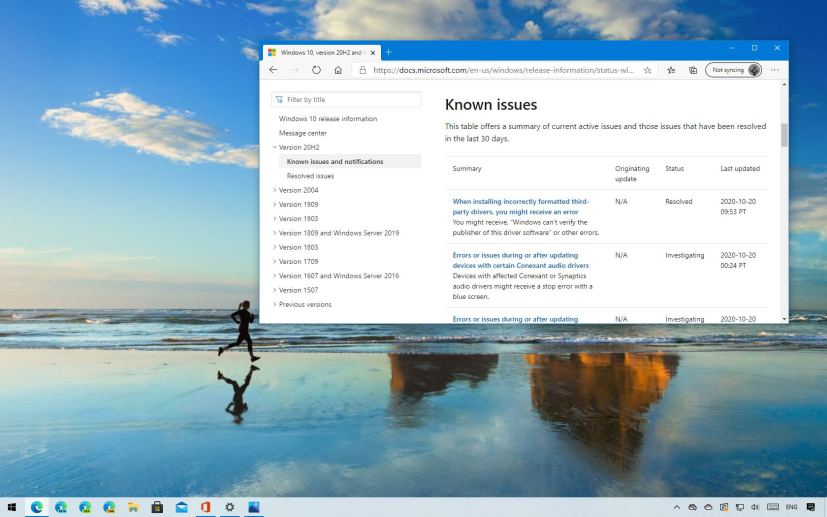UPDATE 11/20: On October 20, Microsoft released the Windows 10 20H2, October 2020 Update, to millions of devices, and along with the kick off of the rollout, the company also published a list of known issues with the new version. And thus far, it doesn’t look bad.
The list of known issues was published at the Windows 10 health dashboard website, and at the time of this writing, it only lists four problems, two of which have been resolved or mitigated, and two that the company is still investigating. Computers that might be affected, the company is placing a compatibility hold to block the update to safeguard the experience.
Known issues for Windows 10 20H2
Here’s a list of the known issues for Windows 10 20h2:
- Authentication and renewal issues for Kerberos ticket after installing updates released November 10, 2020.
- Devices using Thunderbolt SSDs may receive a stop error “DRIVER_VERIFIER_DMA_VIOLATION (e6)” when plugging an SSD in (fixed).
- You might receive an error “Your PC will automatically restart in one minute” when accessing the sign-in options or users MMC snap-in (mitigated).
- Devices in a managed environment using update management tools or ISO images might lose certificates when updating.
- Conexant ISST audio drivers might receive an error or have issues with Windows 10 version 2004.
- Conexant or Synaptics audio drivers might receive a stop error with a blue screen.
Then there are issues with the Microsoft IME for Japanese or Chinese languages, but the problems have been mitigated. Also, the “Windows can’t verify the publisher of this driver software” or other errors when installing incorrectly formatted third-party drivers have been resolved.
Although it’s good to see that a rollout of a new version of Windows 10 with minimal problems, it’s an expected outcome since this is a small update that doesn’t significantly change the system files on version 2004, and Microsoft has been proactively fixing many issues.
Also, the company is using a gradual rollout approach, and it’s only making the 20H2 update available for devices known to have a smooth upgrade experience.
While the new feature update is off to a good start, as more device install version 20H2, Microsoft will probably continue to update the dashboard page with more problems and workarounds as necessary.

